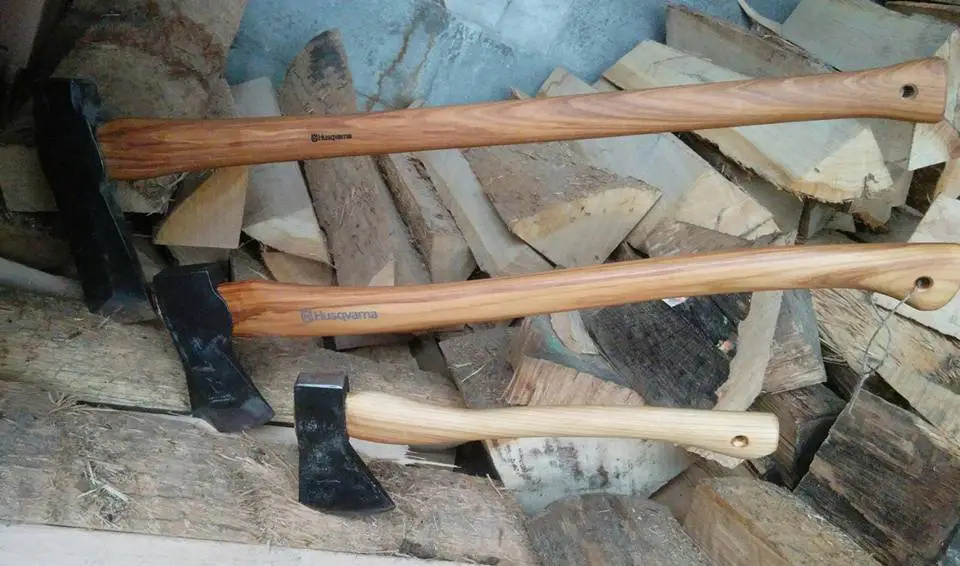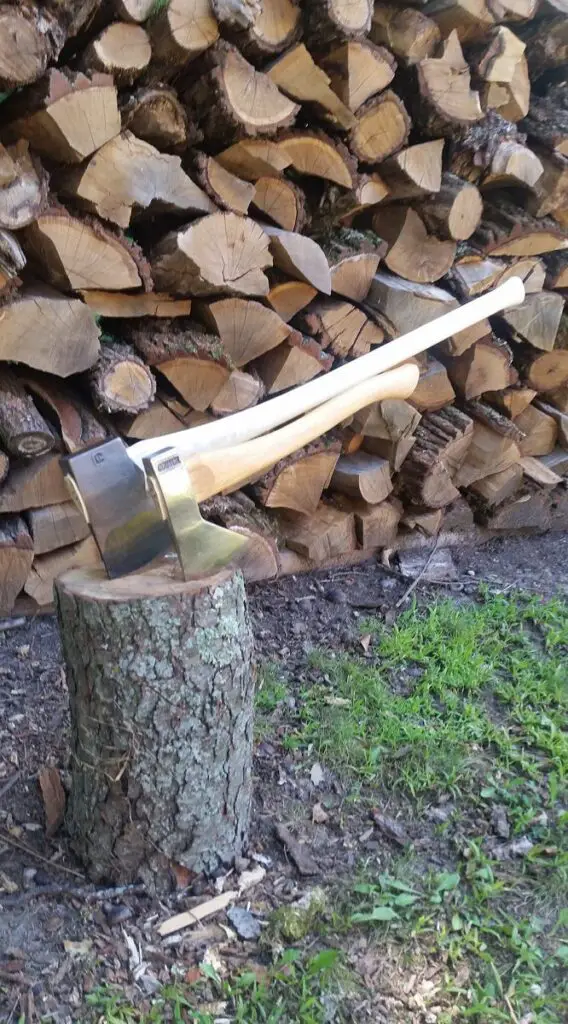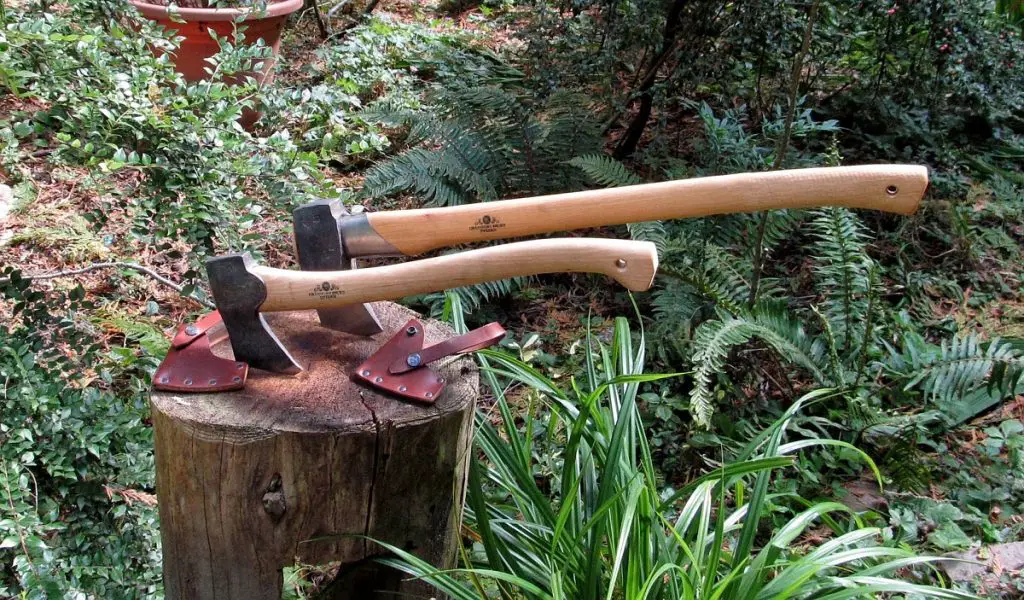The cost of an axe can vary widely based on type, quality, and brand, ranging from as little as $20 for a basic hatchet to over $300 for a premium or artisan-made felling axe.
Having spent countless hours in the woods, splitting logs, and felling trees, I’ve had the opportunity to handle a range of axes, each with unique pricing, quality, and usage.
‘How much does an axe cost?’ is a question I’ve often heard, and as simple as it might sound, the answer is surprisingly nuanced.

Table of Contents
Axe Types and Their Price Range
| Axe Type | Price Range |
|---|---|
| Splitting Axe | $30 – $200 |
| Felling Axe | $40 – $300 |
| Chopping Axe | $25 – $250 |
| Cutting Axe | $30 – $250 |
| Bushcraft Axe | $50 – $200 |
| Splitting Maul | $40 – $200 |
| Hatchet | $20 – $100 |
| Tomahawk | $25 – $200 |
| Broad Axe | $60 – $250 |
| Carpenter’s Axe | $40 – $200 |
| Multi-tool Axe | $30 – $150 |
| Camping Axe | $25 – $150 |
| Double Bit Axe | $50 – $200 |
| Forest Axe | $60 – $300 |
Axe Brands and Their Price Range
| Axe Brand | Price Range |
|---|---|
| Gransfors Bruk | $150 – $300 |
| Hults Bruk | $100 – $250 |
| Wetterlings | $100 – $300 |
| Council Tool | $30 – $200 |
| Fiskars | $20 – $150 |
| Husqvarna | $60 – $200 |
| Estwing | $25 – $75 |
| Gerber | $25 – $100 |
| Cold Steel | $30 – $100 |
| Helko Werk | $125 – $300 |
| Snow & Nealley | $75 – $200 |
| Condor Tool & Knife | $50 – $150 |
| CRKT | $30 – $100 |
Good (High Value) Axes Are Your Best Choice
Having experimented with various axes, I can firmly assert that investing in a high-value axe is your best decision. This realization came to me when I started using a Scandinavian full-size felling axe. Although pricier than an average axe, its benefits were manifold.
This felling axe was a marvel of craftsmanship. Its weight and length were perfectly balanced, allowing for precision and control in each swing. The handle, crafted from sturdy hickory, felt solid and comfortable, proving to be a resilient partner during my hours of work in the woods. The steel head, forged and tempered, bit into the wood effortlessly, making each strike satisfyingly productive.
Yes, I had to part with more money initially, but this axe’s efficiency, durability, and ease of use made the expense well worth it. And let’s not forget the time saved by not having to replace or repair a cheaper, lesser-quality axe frequently.

Premium Axes Are Better, But Not for Beginners
When it comes to premium axes, there’s no denying their superiority. They are the epitome of craftsmanship and materials’ excellence. Brands like Gransfors Bruk and Hults Bruk are revered in the axe-world for good reason. Their axes are masterpieces, each a result of meticulous attention to detail and high-quality materials.
However, while the allure of owning a premium axe might be strong, if you’re a beginner, you might want to hold off on this investment. I recall my early days when I got my hands on a Gransfors Bruk. Yes, it was a spectacular axe, but its use demanded a skill level I hadn’t yet attained. It’s like giving a race car to a new driver; without the necessary experience, the full potential of the tool remains untapped.
So, my advice to newbies is to start with a reliable, high-value axe, and once you’ve honed your skills, upgrade to a premium one.

Cheap Axes Can Be Tempting But Should Be Avoided
The allure of cheap axes often lies in their price tags, not their performance. I’ve seen many people fall for this trap, only to end up frustrated and disappointed. I, too, made this mistake once. I bought a cheap cutting axe, which was light and seemed handy enough. But in action, its shortcomings quickly became apparent.
The steel quality of the head was subpar, leading to a blade that dulled quickly and required frequent sharpening. The fiberglass handle, although lightweight, lacked the robustness and solidity I prefer for heavy-duty work. This axe wore out and failed much quicker than my other, slightly more expensive tools. The minor savings made at the time of purchase paled compared to the inconvenience and additional costs down the line.
Artisan Made Axes Are Perfectly Tuned and Beautifully Made
If you’ve ever held an artisan-made axe, you’ll know what a joy it is to both behold and use. These axes are the epitome of fine craftsmanship, the product of skilled artisans who pour their heart and soul into creating these masterpieces.
I have a hand-crafted German axe in my collection that is a testament to this. Each element, from the carefully forged head to the beautifully carved handle, resonates with quality and attention to detail. It is a visual treat and a dream to use – perfectly balanced, and a powerhouse when it comes to splitting and felling.
Yes, artisan axes are an investment, but for those who appreciate fine craftsmanship and high performance, they are worth every penny.
Differences Between Cheap, Good, Premium, and Artisanal Axes
The journey from cheap to artisanal axes is one of increasing quality – be it the steel used, the handle material, or the overall craftsmanship. Cheap axes may seem like a steal, but they often compromise on quality and durability. You’re better off with a good or premium axe for regular woodwork or more intensive tasks.
And if you’re in pursuit of the absolute best and have the budget for it, artisanal axes are a thing of beauty. They offer unmatched quality, performance, and aesthetic appeal, making them the prized possessions of serious axe enthusiasts like myself.
Steel Quality
Steel quality is the backbone of an axe’s performance. It dictates the sharpness attainable by the blade and the length of time it stays that way. While cheap axes often use inferior steel that dulls quickly, good, premium, and artisanal axes employ high-quality or specially treated steel. This enhances the axe’s performance by providing superior sharpness and long-lasting edge retention.
Handle Quality – Steel vs Fiberglass vs Wooden
The handle of an axe greatly affects its durability, usability, and comfort. The most common materials include steel, fiberglass, or wood.
Steel handles, found in some axes, are robust but can be heavy and less forgiving on the hands. Fiberglass handles, commonly found in cheaper axes, are lighter but may compromise on durability.
On the other hand, a well-crafted wooden handle, such as hickory, typically found in most premium and artisanal axes, hits the sweet spot. It provides a satisfying blend of durability, comfort, and balance, making axe work more enjoyable experience.
What Impacts an Axe’s Price
An axe’s price is influenced by several factors – the type of axe, its brand, the materials used, and the quality of craftsmanship. Higher-quality steel and handle materials, as does superior craftsmanship, command a higher price. Also, the reputation of the brand plays a significant role. Well-established brands like Gransfors Bruk and Hults Bruk are recognized for their quality products and therefore can demand higher prices.
Conclusion
So, how much does an axe cost? Well, it depends. From cheap options around $20 to premium and artisanal axes costing several hundred dollars, there’s an axe for every budget and level of experience.
But remember, an axe is an investment.
Choose wisely based on your needs, experience, and budget, and you’ll have a tool that does the job well and lasts a lifetime.
